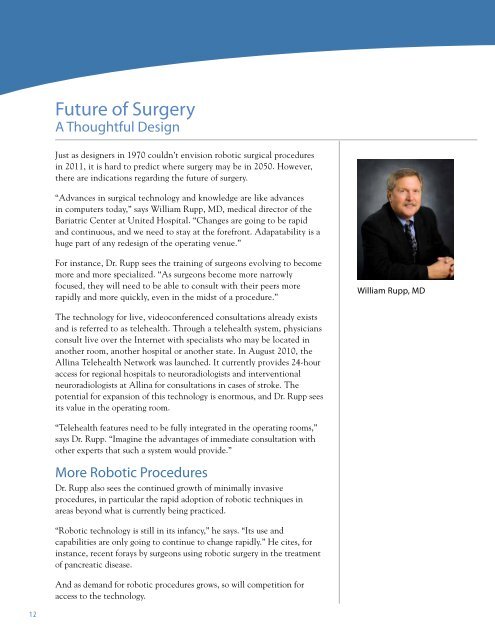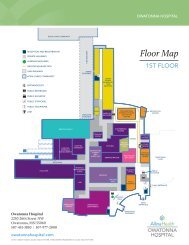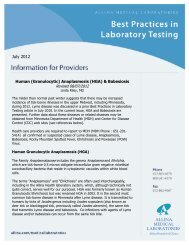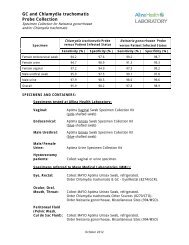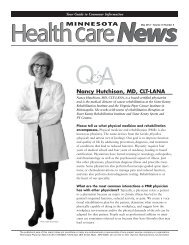Elaine S. Larson Surgical Center Campaign - Allina Health
Elaine S. Larson Surgical Center Campaign - Allina Health
Elaine S. Larson Surgical Center Campaign - Allina Health
Create successful ePaper yourself
Turn your PDF publications into a flip-book with our unique Google optimized e-Paper software.
12<br />
future of Surgery<br />
A thoughtful design<br />
Just as designers in 1970 couldn’t envision robotic surgical procedures<br />
in 2011, it is hard to predict where surgery may be in 2050. However,<br />
there are indications regarding the future of surgery.<br />
“Advances in surgical technology and knowledge are like advances<br />
in computers today,” says William Rupp, MD, medical director of the<br />
Bariatric <strong>Center</strong> at United Hospital. “Changes are going to be rapid<br />
and continuous, and we need to stay at the forefront. Adapatability is a<br />
huge part of any redesign of the operating venue.”<br />
For instance, Dr. Rupp sees the training of surgeons evolving to become<br />
more and more specialized. “As surgeons become more narrowly<br />
focused, they will need to be able to consult with their peers more<br />
rapidly and more quickly, even in the midst of a procedure.”<br />
The technology for live, videoconferenced consultations already exists<br />
and is referred to as telehealth. Through a telehealth system, physicians<br />
consult live over the Internet with specialists who may be located in<br />
another room, another hospital or another state. In August 2010, the<br />
<strong>Allina</strong> Telehealth Network was launched. It currently provides 24-hour<br />
access for regional hospitals to neuroradiologists and interventional<br />
neuroradiologists at <strong>Allina</strong> for consultations in cases of stroke. The<br />
potential for expansion of this technology is enormous, and Dr. Rupp sees<br />
its value in the operating room.<br />
“Telehealth features need to be fully integrated in the operating rooms,”<br />
says Dr. Rupp. “Imagine the advantages of immediate consultation with<br />
other experts that such a system would provide.”<br />
More robotic Procedures<br />
Dr. Rupp also sees the continued growth of minimally invasive<br />
procedures, in particular the rapid adoption of robotic techniques in<br />
areas beyond what is currently being practiced.<br />
“Robotic technology is still in its infancy,” he says. “Its use and<br />
capabilities are only going to continue to change rapidly.” He cites, for<br />
instance, recent forays by surgeons using robotic surgery in the treatment<br />
of pancreatic disease.<br />
And as demand for robotic procedures grows, so will competition for<br />
access to the technology.<br />
William rupp, Md


